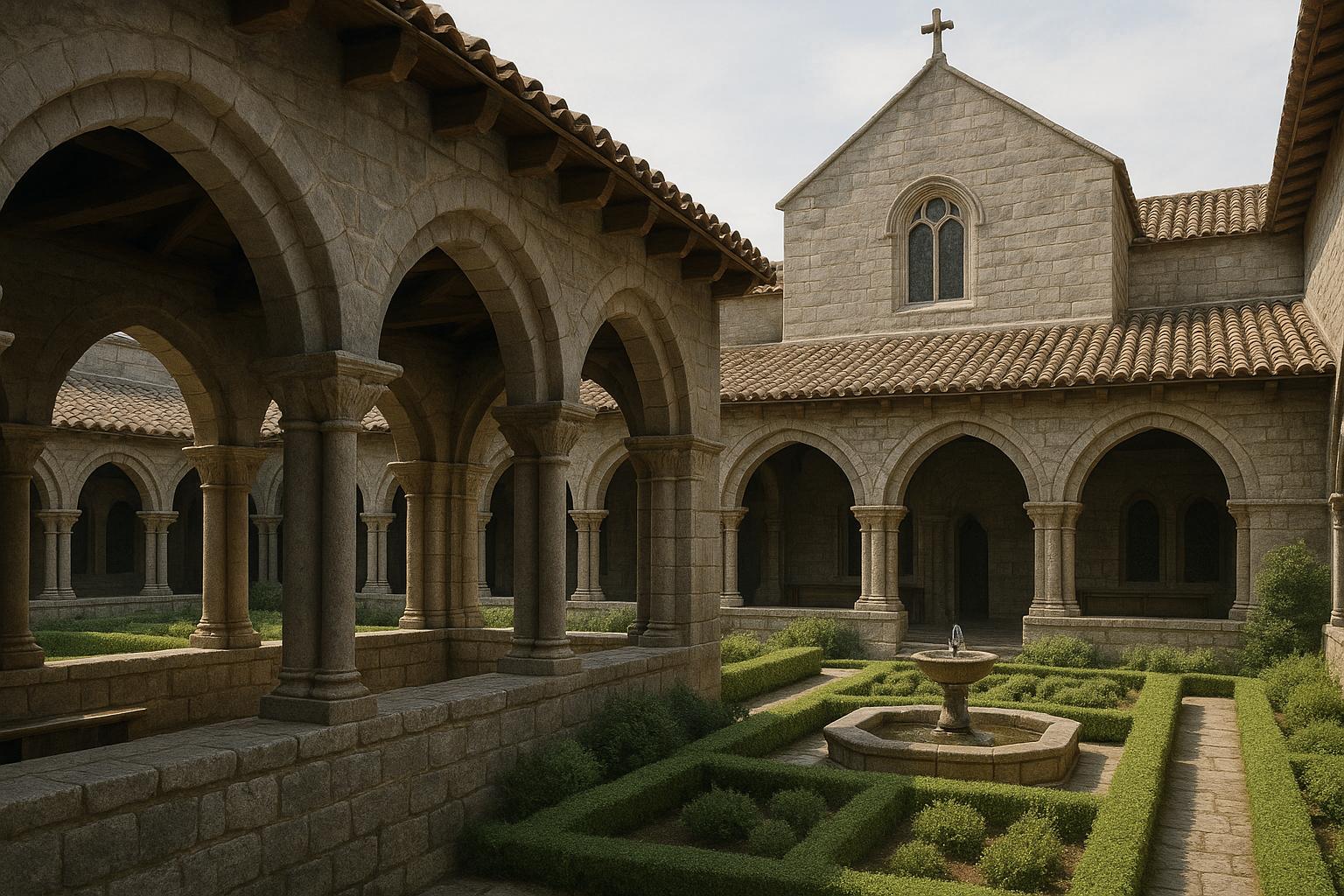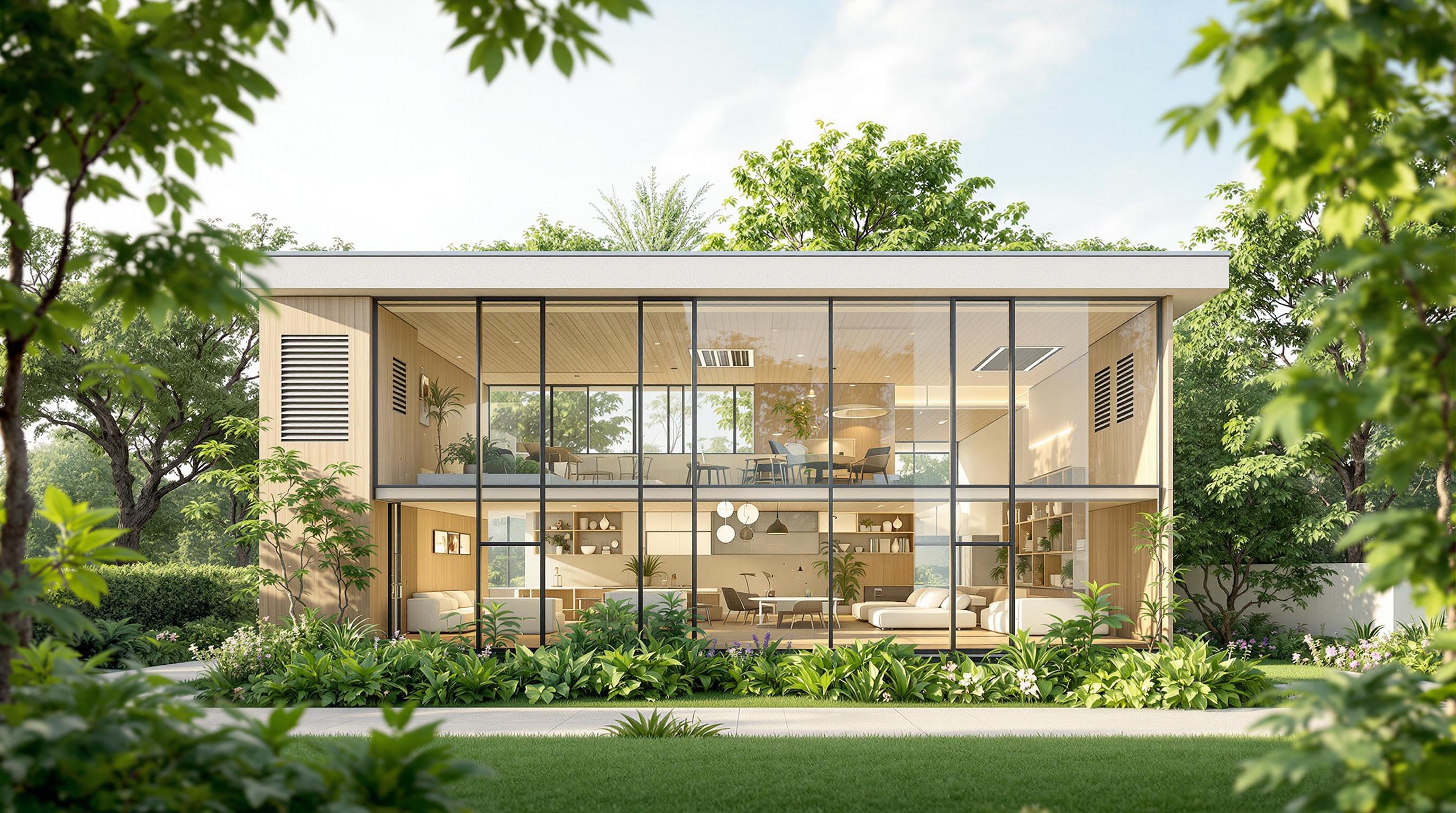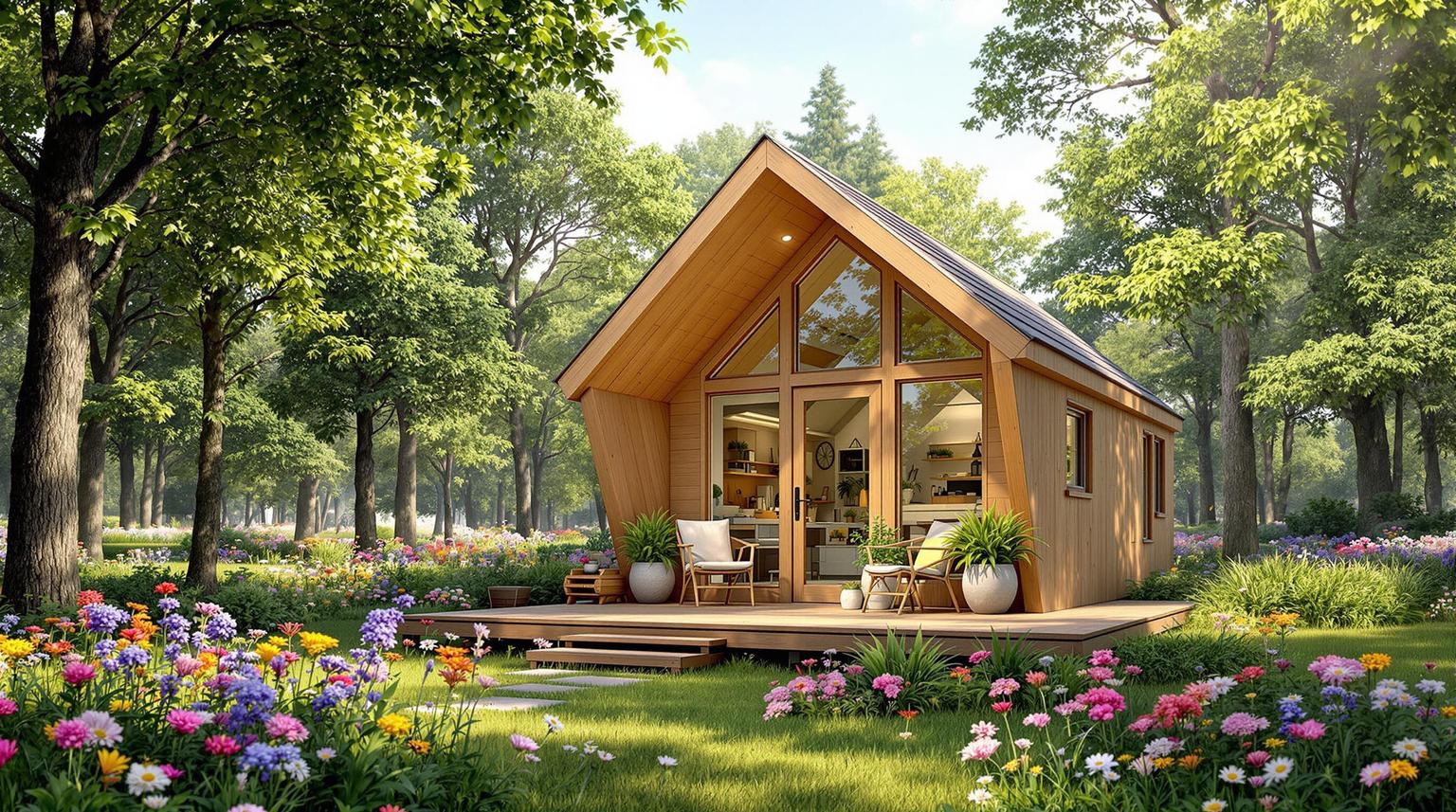Public spaces are crucial for building connections, improving well-being, and fostering safety in communities. Here's a quick guide to designing spaces that meet diverse needs:
- Accessibility: Ensure spaces are usable for everyone, including individuals with disabilities. Features like ramps, wide pathways, and clear signage are key.
- Social Interaction: Design areas that encourage interaction, like seating clusters, open gathering spots, and multi-use zones.
- Local Input: Engage the community through surveys, focus groups, and direct feedback to reflect their needs and culture.
- Green Spaces: Add plants, trees, and water-smart landscaping to improve air quality, reduce heat, and support wildlife.
- Flexible Use: Incorporate movable furniture and modular designs to adapt spaces for various activities and events.
- Safety: Include proper lighting, clear sight lines, and emergency access to make spaces welcoming and secure.
Why It Matters
- Health Benefits: Green spaces improve physical and mental health.
- Stronger Communities: Inclusive designs bring people together, reducing isolation.
- Environmentally Friendly: Sustainable landscaping reduces water use and supports biodiversity.
Designing public spaces isn’t just about aesthetics - it’s about creating places where everyone feels they belong.
Jeff Risom: Design for Inclusive Public Life
Research Methods for Community Input
Designing public spaces that truly serve their communities starts with understanding the people who use them. This means blending systematic research with meaningful community engagement.
Physical Site Assessment
A thorough assessment of the physical site lays the groundwork for effective design. Combining onsite surveys with GIS mapping can reveal how land is used, how transportation flows, and the state of existing infrastructure. Tools like Architecture Helper are especially useful for documenting architectural features and understanding how they fit into the larger context.
| Assessment Component | Key Considerations |
|---|---|
| Site Conditions | Topography, drainage, sunlight exposure |
| Access Points | Pedestrian flow, vehicle access, public transit |
| Existing Features | Historic structures, vegetation, utilities |
| Safety Elements | Lighting, sight lines, emergency access |
While technical data is essential, it becomes even more valuable when paired with insights gathered directly from the community.
Public Input Methods
Public engagement is a cornerstone of inclusive design. For example, planners in Austin, Texas, used focus groups at local businesses and mobile feedback stations to ensure representation of the city's diverse population.
Amelia Shaw, Executive Manager of the International Association for Public Participation USA, highlights the growing emphasis on inclusivity:
"This has become a bigger issue just in the past few years - how to be more inclusive. Planners and project teams are waking up to the fact that all voices matter."
Eugene, Oregon’s Parks and Recreation team showcased this principle in action. Their targeted outreach included:
- Attending events hosted by the Latino community
- Offering bilingual materials to bridge language gaps
- Conducting interviews directly on-site
- Using community feedback to shape their designs
Local Features Analysis
Understanding the local context goes beyond feedback; it involves studying the area's cultural and physical characteristics. A standout example is Durban, South Africa's Traditional Medicine and Herb Market. Designers worked closely with vendors to create a space that met their needs, incorporating:
- Enclosed trading stalls for better functionality
- Storage spaces for convenience
- Wider walkways to improve accessibility
- Cooking facilities to support traditional practices
Dr. Joan Clos, Executive Director of UN Habitat, underscores the importance of public spaces in defining a city’s character:
"What defines the character of a city is its public space, not its private space."
Modern tools have made it easier to analyze and integrate local features. These include:
- 3D modeling to understand spatial relationships
- Social media sentiment analysis to gauge public opinions
- Network analysis to explore community connections
- Remote sensing for environmental insights
Montgomery County, Maryland, provides a strong example of effective community engagement. Along the Veirs Mill road corridor, planners conducted bilingual interviews at bus stops. The feedback they gathered directly influenced design solutions that addressed local needs.
Multi-Purpose Design Elements
Designing for public spaces means creating areas that can adapt to the ever-changing needs of a community. These spaces must accommodate a variety of activities, adjust to different weather conditions, and ensure accessibility for everyone.
Flexible Space Planning
Public spaces thrive when they can easily transform to meet shifting demands. Nate Storring highlights the importance of this adaptability:
"Providing the fundamentals can make a public space an active platform for people's everyday uses, whether that's talking, eating, hanging out, or resting, even without a lot of management and programming."
A great example of this is the Shafter Library & Learning Center in California. Its renovation introduced spaces that serve multiple purposes while also broadening the range of programs offered.
| Design Element | Purpose | Community Benefit |
|---|---|---|
| Movable Furniture | Enables reconfiguration | Accommodates groups of various sizes and needs |
| Multi-use Surfaces | Supports varied activities | Encourages both active and passive engagement |
| Modular Structures | Allows temporary installations | Perfect for events and seasonal activities |
These flexible features empower communities to make the most of their public spaces, fostering accessibility and creativity.
ADA Standards Implementation
Accessibility isn't just a box to check - it's a cornerstone of inclusive design. The Americans with Disabilities Act (ADA) sets clear guidelines to ensure public spaces are accessible to everyone. Key requirements include:
- Minimum 36-inch-wide accessible routes
- Clear floor space for wheelchair turning
- Controlled slopes for ramps and walkways
- Stable and slip-resistant surface materials
For example, the City of Columbus Recreation and Parks Department improved accessibility at their Franklin Park Adventure Center by installing a ceiling track system, making the space more inclusive for all visitors.
By meeting these standards, public spaces become more functional and welcoming for everyone, no matter the season.
Weather Protection Features
Weather-proofing is essential for keeping outdoor spaces enjoyable year-round. Andrea Zaghi emphasizes the importance of this:
"Pergolas offer a reliable experience where, just like you know you can go into your living room, sit on your couch, and not have to deal with it being too hot, cold, or sunny, you can have that same experience - and get fresh air at the same time."
Key weather protection features include:
- Louvered roof systems to shield against sun and rain
- Wind-protected walking paths
- Strategically placed shade structures
- Effective drainage systems to prevent pooling
Spending time outdoors has clear benefits - research reveals that 60% of people report improved mental health after outdoor activities. To maximize usability, designs often include continuous overhead coverage along main pathways and larger covered areas at popular gathering spots.
sbb-itb-1be9014
Smart Landscaping Practices
Smart landscaping is all about designing outdoor spaces that are both environmentally friendly and beneficial for the community. This method ties together sustainable features and adaptable design principles to create spaces that thrive while meeting local needs.
Local Plant Selection
Smart landscaping emphasizes the use of native plants to balance architectural flexibility with ecological stability. Why native plants? They’re a powerhouse for biodiversity. For instance, native oak trees can support over 500 caterpillar species, compared to just five species for non-native options.
"Using locally grown native plants in your landscape makes your yard part of the larger ecosystem. Your plants provide genetic diversity to nearby wild plant populations, which are the foundation of healthy, resilient natural systems. Planting native plants is one of the best things you can do to care for the planet." – EMSWCD
Aiming for at least 70% native plants in your landscape can make a huge difference. Here’s how:
| Plant Characteristic | Community Benefit | Environmental Impact |
|---|---|---|
| Drought Tolerance | Reduces water usage | Lowers irrigation costs |
| Deep Root Systems | Stabilizes soil | Minimizes erosion |
| Seasonal Variety | Provides year-round interest | Extends wildlife support |
| Local Adaptation | Requires less maintenance | Increases resilience |
Water Management Design
Smart landscaping also means rethinking how we manage water. A great example comes from the City of Modesto, which installed a 164-space parking lot using Low Impact Development techniques. The result? They cut installation costs by 20% and saved on maintenance expenses.
Here are two key strategies for water-smart landscaping:
- Stormwater Control: Urban areas produce up to five times more runoff than forested regions. Green infrastructure, like rain gardens and permeable pavements, can eliminate up to 90% of stormwater pollutants.
- Smart Irrigation: Using WaterSense-labeled controllers and soil moisture sensors can drastically improve water efficiency. Did you know that lawn irrigation accounts for 30% of water use on the East Coast and a whopping 60% on the West Coast?.
These practices not only reduce water waste but also prepare public spaces for better ecological integration, leading to healthier environments.
Urban Wildlife Habitats
Public spaces can do more than serve people - they can also support local wildlife. Research shows that native habitat gardens attract twice as much wildlife as traditional turf lawns.
"Restoring native plant habitat is vital to preserving biodiversity. By creating a native plant garden, each patch of habitat becomes part of a collective effort to nurture and sustain the living landscape for birds and other animals." – Audubon Society
To make urban spaces more wildlife-friendly, consider these features:
| Feature | Purpose | Implementation |
|---|---|---|
| Water Sources | Attract diverse species | Add ponds or bird baths |
| Natural Corridors | Allow wildlife movement | Create connected green strips |
| Shelter Options | Provide safe spaces | Install bird boxes, insect hotels |
| Dark Sky Areas | Protect nocturnal species | Use downward-facing lighting |
Urban green spaces don’t just benefit wildlife - they’re also a financial win. Each hectare can provide $2,500 to $16,500 in annual benefits through carbon storage, stormwater reduction, and pollution control. Plus, planting trees strategically can lower local temperatures by 2–9°F, offering relief during hot summers.
Success Metrics for Public Spaces
To gauge how effective public spaces are, evaluation tools focus on both measurable data and user experiences. Research shows that only 5% of public spaces fully satisfy community needs, while 63% fall short and require changes. One way to measure success is by analyzing how people use these spaces.
Space Usage Analysis
Understanding how public spaces are used involves blending observational techniques with digital tools. The Project for Public Spaces (PPS) highlights four essential qualities of thriving public spaces: they should be accessible, offer engaging activities, feel welcoming and comfortable, and encourage social interactions.
| Analysis Method | Implementation Tools |
|---|---|
| Foot Traffic | Motion sensors, cameras |
| Dwell Time | Wi-Fi tracking, heat maps |
| Activity Mapping | Time-lapse photography |
| Peak Hours | Automated counters |
Community Access Review
Accessibility plays a critical role in creating spaces that invite everyone to participate. Research indicates that excluding people with disabilities due to inaccessible environments can cost economies up to 7% of their GDP.
One standout example is Stockholm, which has embraced universal design. By incorporating ramps, elevators, and tactile paving, the city transformed previously inaccessible areas, leading to a noticeable rise in foot traffic.
"We are stronger together, and together we can build an equitable, accessible, inclusive world for all."
– Sara Minkara, State Department Special Advisor on International Disability Rights
Key features to evaluate when assessing accessibility include:
- Clear signage and navigation aids
- Ramps and level entry points
- Ample rest areas and seating
- Adequate lighting for safety and visibility
- Emergency access and evacuation routes
While usability and accessibility are vital, managing upkeep costs is equally important for ensuring the longevity of public spaces.
Upkeep Cost Planning
Planning for maintenance is crucial to keeping public spaces functional and inviting in the long run. Annual upkeep expenses can vary widely - for instance, maintaining a single tree costs between $15 and $50 per year. Low Impact Development (LID) systems, on the other hand, cost about $0.50 to $1.50 per square foot annually.
Here are some strategies to manage maintenance costs effectively:
| Cost Category | Management Strategy | Expected Outcome |
|---|---|---|
| Regular Maintenance | Proactive scheduling | Fewer emergency repairs |
| Equipment Updates | High-quality installations | Less frequent replacements |
| Staff Training | Specialized programs | Greater operational efficiency |
| Green Infrastructure | Integrated eco-friendly systems | Longer-lasting infrastructure |
"Long-term maintenance costs are all expenses incurred after the initial implementation phase, critical for ensuring the continued efficiency and viability of sustainable energy systems."
Conclusion: Keys to Successful Public Space Design
Creating thriving public spaces hinges on community involvement, thoughtful design, and long-term sustainability. By focusing on these principles, planners and architects can craft areas that are both functional and welcoming to all. When communities are engaged in the process and their voices are heard, these spaces often transform into hubs that meet the diverse needs of those who use them.
Take the Medellín River Parks project in Colombia as an example. By involving marginalized communities in the design process, the project successfully created spaces that are inclusive and accessible to everyone.
"It's hard to design a space that will not attract people. What is remarkable is how often this has been accomplished." - William (Holly) Whyte
Here’s a quick look at how key focuses align with practical strategies and measurable success:
| Focus Area | Strategy | Success Indicators |
|---|---|---|
| Community Voice | Participatory planning | Usage rates, satisfaction scores |
| Environmental Impact | Green infrastructure design | Resource efficiency metrics |
| Inclusive Design | Universal access features | Visitor diversity statistics |
Copenhagen’s Superkilen park offers another great lesson in inclusivity. By incorporating objects and symbols from various countries, it reflects the cultural diversity of the local community. This approach not only celebrates the residents’ heritage but also fosters a sense of pride and belonging.
FAQs
How can public spaces be designed to be inclusive and accessible for people with disabilities?
Creating public spaces that are welcoming and functional for individuals with disabilities requires careful planning and attention to detail. Start with the basics: follow ADA guidelines by incorporating ramps, elevators, wide doorways, and accessible restrooms. These features ensure compliance and provide essential access for everyone.
Beyond the basics, applying universal design principles can make spaces usable for people of all abilities. For instance, clear signage in both plain language and braille helps with navigation, while smooth, obstacle-free pathways and proper lighting enhance safety and usability.
Parking is another critical consideration. Accessible parking spots should be located close to entrances, with safe, clearly marked paths leading to them. Additional features like automatic doors, seating areas at various heights, and tactile surfaces can make a big difference in creating an inclusive environment.
Finally, engaging the community during the design process is key. By involving those who will use the space, you can better understand their needs and preferences, ensuring the design truly serves everyone. Thoughtful design isn’t just about meeting legal standards - it’s about creating spaces where everyone feels they belong.
What are the best ways to gather community input when designing public spaces?
To create public spaces that genuinely serve the community, gathering input from residents is a must. One effective way to do this is by organizing public meetings or workshops. These gatherings allow people to share their ideas directly and feel like active participants in shaping their environment. Plus, they encourage collaboration and a sense of shared responsibility.
Another useful approach is conducting online surveys. These are great for reaching a broader audience, making it easier to gather input from people with diverse experiences and viewpoints. To ensure no one feels left out, targeted outreach can be used to connect with underrepresented groups, giving them a platform to voice their needs and ideas.
For those who prefer a more interactive method, participatory design techniques - like charrettes - offer a fantastic option. These sessions bring community members together to brainstorm and work on creative solutions as a team. By blending these strategies, you can design public spaces that truly reflect the community’s unique character and aspirations.
Why are native plants a sustainable choice for landscaping public spaces?
Using native plants in landscaping public spaces is a smart, eco-friendly approach. Since these plants are naturally suited to the local environment, they need less water, fertilizer, and pesticides. This not only conserves resources but also cuts down on harmful chemical runoff that can damage nearby ecosystems.
Beyond that, native plants are a lifeline for local wildlife, especially pollinators like bees and butterflies. They boost biodiversity, improve soil quality, and help control erosion, making public spaces better equipped to handle changes in climate. Plus, their lower maintenance requirements can lead to significant savings on upkeep over time, offering both environmental and financial advantages.


